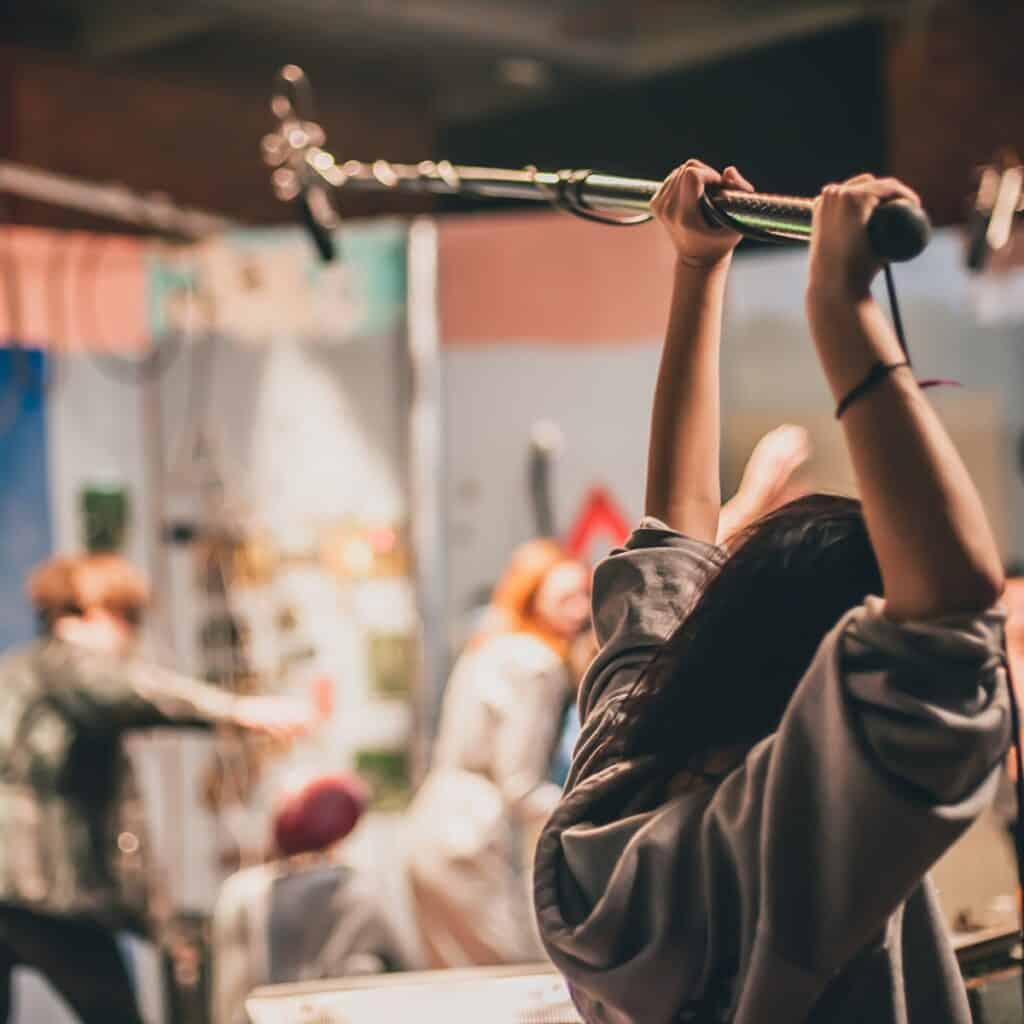Boom poles: why use them in video recordings?
A boom pole is a telescoping or folding pole that is used to support a microphone. The boom pole allows the user to position the microphone closer to the subject, while keeping the microphone off-camera.
This can be helpful in reducing background noise and capturing clear audio. Boom poles are often used in video production, as well as for recording podcasts and other audio-only content.

The main reason to put a microphone on a tree is for more isolated audio. This is true whether the audio is intended for a video, movie, YouTube video, or Vlog.
A pole-mounted microphone allows the microphone to get closer to the audio source than a camera is likely to be. Also, a drawback for many videographers is the limitation of the camera’s built-in microphone, so many also buy a separate microphone for their video production as standard, like one of these 9 in my extensive review of camera microphones.
Even the best cameras can greatly benefit from an external microphone, or better yet, a microphone on a mast. Wireless lavaliers (or tie-clip microphones, Theo de Klein explains all about it here) are one way to do that, a boompole is also a very good choice.
With a boompole you can place the microphone close to the source. Add a quality outdoor windshield to it and there aren’t many better ways to get high quality audio for your videos.
Also check out these best boom poles for video production
Limitations of using a pole
As with all good things, there is often a price. The biggest prize for microphone boom in my opinion is physical. Even a lightweight microphone can be difficult to hold after a while.
Arm fatigue kicks in and we end up with the mic in our shot.
We have to be careful not to wave too close to our subject or we could accidentally hit them hard. Or we can knock over a prop or a piece of decoration.
Getting started with your own stop motion storyboards
Subscribe to our newsletter and get your free download with three storyboards. Get started with bringing your stories alive!
We'll only use your email address for our newsletter and respect your privacy
We have to watch out for, or listen for, excess noise. If there are loose connections or if the cord hits the pole, or if we’re too rough handling the pole, that noise can be transferred to the recording.
If you’re careful enough, those things shouldn’t limit you too much.
Also read: these are the best camera dolly sliders you can buy for your home production
Hi, I'm Kim, a mom and a stop-motion enthusiast with a background in media creation and web development. I've got a huge passion for drawing and animation, and now I'm diving headfirst into the stop-motion world. With my blog, I'm sharing my learnings with you guys.

